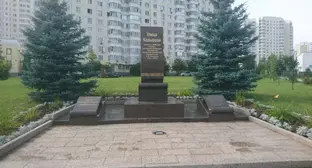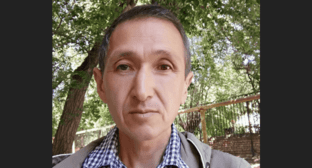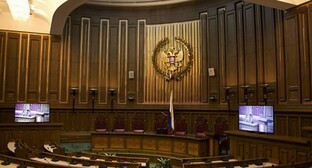07 May 2003, 03:55
Grozny
Capital of the Chechen Republic, 2007 km south - south-east of Moscow. Located in the North Caucasus, on the Chechen (Grozny) foothill plain, in the valley of the Sunzha River (the right tributary of the Terek) and on adjacent slopes of the Sunzha Ridge. Continental climate. Mild winter, unstable weather, frequent thaws, the temperature in January averages to -4?С. Hot summer, the temperature in July averages to 22-24?С. Precipitations of 400-600 mm a year, mostly from May to July.
Grozny is a railway station in the Rostov-on-Don - Baku line. Motor road junction. Airport. Population (1992 est.) 387.5 thousand, (1897 est.) 15.6 thousand, (1926 est.) 68.7 thousand, (1939 est.) 173 thousand, (1959 est.) 250 thousand, (1970 est.) 341 thousand, (1979 est.) 375 thousand.
Founded in 1818 as the fortress of Groznaya at behest of General A.P. Yermolov. As the major link of the Sunzha line, the fortress prevented mountaineers from descending onto the plain through Khankala Gorge.
It was in the fortress of Groznaya that A.S. Griboyedov was arrested in 1826 in re Decembrists; Decembrists I.A. Bestuzhev, I.I. Pushchin, etc. did their military service in the Caucasus, as well as M.Y. Lermontov (in 1840) and L.N. Tolstoy (in 1851-1854).
By 1870, the fortress lost its strategic significance, was abolished and transformed in to the okrug (district) city of Grozny, Terek oblast (province). In the late 19th and the early 20th centuries, driving of the Beslan - Grozny railway, extended to Baku in 1893, and industrial development of the Grozny oil region contributed to fast growth of the city. By 1917, there were 386 oil wells. Oil was taken out by rail, pumped over to the coast of the Caspian Sea (the present city of Makhachkala) along the first Russian Grozny - Petrovsk-Port oil pipeline (built in 1914), as well as supplied local refineries. The city had an iron foundry and machine shops.
During the Civil war, Grozny and its environs were arena of fierce fights. Since 1922, Grozny was the centre of Chechen autonomous oblast; since 1934, Chechen-Ingush autonomous oblast, transformed into an ASSR in 1936. In the 1920-30s, extracting industry of the Grozny oil region was restored and further developed. In the late 1920s, the Grozny - Tuapse oil pipeline was built. Grozny got new enterprises of oil refining, engineering, chemical, light, flavouring industries, as well as high schools, cultural establishments, etc.
During the Great Patriotic War of 1941-1945, the city was heavily damaged by bombardments of Nazi aircraft in summer 1942. During Stalin repressions, after expulsion of the Chechen and the Ingush peoples to Central Asia, Grozny was the centre of Grozny oblast (province) in 1944-1957. Capital of the Chechen-Ingush ASSR since 1957.
In the late 1980s, Grozny was the centre of oil-extracting, oil refining, petrochemical and chemical industry of the North Caucasus, an industrial and cultural centre. Products of petroleum refining made by the Grozny petroleum refinery, as well as accompanying and natural gas, were used as raw materials for enterprises of PО Groznefteorgsintez, making various kinds of ready chemical production and semifinished items (acetylene, phenol, polyethylene, synthetic alcohols,hardeners, etc.). Grozny had engineering enterprises: the Krasny Molot petroleum engineering works and the Neftekhimzapchast plant, making various kinds of machines, equipment, assemblies, aggregates and instrumentation for petroleum and petrochemical industry, as well as PO Orgtekhnika, a transport machine-building works, the Elektropribor plant, a radio engineering plant, etc., enterprises of flavouring industry (a cannery, a winery, a dairy, a meat-processing plant, etc.), light (a clothes factory, a shoe factory), woodworking industry, enterprises of building materials. A lot of enterprises worked for the military-industrial complex. Grozny was connected to oil fields by a network of oil and gas conduits. Gas transmission pipelines connected Grozny to Stavropol and the stanitsa (Cossack village) of Voznesenskaya, Ingushetia. The city had several research and development establishments and design institutes, including Grozny Petroleum Research Institute, the State Institute for Designing of Petroleum Enterprises, Grozny State Institute for Designing of Oil-Refining and Petrochemical Enterprises, Chechen-Ingush Institute of History, Sociology, Philology.
Before the armed conflict of 1994-1996, the city had four theatres: the National Drama Theatre, the Russian Drama Theatre, the Ingush Drama National Theatre, a puppet-show; and two museums: Chechen-Ingush State Joint Museum and the museum of fine arts.
In 1871, the first city-planning scheme was made. Driving of the railway and development of petroleum industry made Grozny expand fast, but it remained an uncomfortable city with predominance of one-storeyed clay-walled huts and adobe small houses. Three districts of present Grozny (Zavodskoy, Leninsky and Octyabrsky) included chaotically located residential communities (microdistricts, settlements, plots) of both modern multi-storeyed panel building-up and one-storeyed private houses, passing into inhabited localities of Grozny rural rayon (sector), including Alkhan-Kala, Alkhan-Yurt, Prigorodny, Chechen-Aul. Staropromyslovsky district stretches for many kilometres to the north-west along the highway of the same name. Before 1995, the central part of Grozny was formed by broad streets and avenues, building-up of the 1940-50s predominating. The city had lots of green plantations, flower beds and fountains. The main square with the building of the former republican CPSU Committee (completely destroyed in 1996) and the thoroughfares fitted the gridiron pattern of streets and were interconnected by ring and half-ring routes. The general city-planning scheme of 1950 stipulated construction of numerous industrial structures, multi-storeyed residential houses and public buildings, including: the Giprogrozneft Institute (1950, architect L.I. Dedkov), Palace of pioneers and schoolchildren (reconstruction, 1953, architect L.I. Khait), the Central Department Store (1956, architect R.M. Vlasov; heavily damaged by the acts of war of 1994-1996 and 1998-2000), the Republican Library (1965, engineer V.М. Izmaylov), the airport (1965, architect R.K. Barsegyan, D.A. Kadiyev), the building of the Republican Ministerial Council (1966, architect I.I. Zagrebaylov).
Overpass (of about 300 m long; engineer K.P. Nazarenko) connected two industrial districts to the centre. Near the centre, there were quarters of one and two-storeyed houses, surrounded by orchards. The Zavodskoy district had a park with a complex of cultural (1949, architect B.N. Fedotov) and sporting (1960, architect Dedkov) structures. On the outskirts of the city, there were residential districts of multi-storeyed houses built in the 1960-1980s.
Grozny had monuments to M.Y. Lermontov, A.I. Polezhayev, A.P. Chekhov, Civil war heroes (heavily damaged in 2000), the Ogon vechnoy slavy memorial (Fire of Eternal Glory) to Soviet soldiers who perished during the Great Patriotic War of 1941-1945 (turned into a memorial to fighters for independence of Chechnya in 1997).
In the south-west end of Grozny, in the Chernorechye, in the valley of the Goyta River, there is a man-made reservoir (the Grozny Sea), which was created in 1965 and functioned until the late 1980s as the zone of rest with a beach and other structures.
Grozny was the capital of the Chechen-Ingush Republic since 1990, of the Chechen Republic since 1991, of the Chechen Republic of Ichkeriya since 1994; at present, the official name of Chechnya is the Chechen Republic.
In 1991, the building of the Republican Party Committee was turned into residence of Dzhokhar Dudayev, the President of the Chechen Republic. It symbolised struggle of the Chechen people for independence and was heavily damaged by bombardments in January, 1995; in 1996, the remains of the presidential palace were blown up.
After death of Dzhohar Dudayev in 1996, separatists renamed Grozny into Dzhohar-Gala.
During the armed conflict of 1994-1996 and the anti-terroristic action of 1998-2000, the largest part of the city was destroyed. During the storm of Grozny by federal troops from December, 1994 to March, 1995, central districts were destroyed (the military operations took lives of 20-25 thousand inhabitants). In August 1996, Grozny was seized by the Chechen groups, the fights heavily damaging the central and the southern part of the city, which were partially restored earlier. As a result of bombardments and storm of the city from October 1999 to February 2000, practically all residential communities were heavily or completely destroyed. More than 40 thousand people managed to survive during the last siege and storm of Grozny, but more than 5 thousand were lost.
During the acts of war, all industrial enterprises were destroyed and plundered; the city infrastructure, according to some assessments, is not subject to restoration. Most objects of the public health service system are also destroyed.
By summer 2000, the population of Grozny was more than 80 thousand people. Three higher educational establishments continue their functioning in Grozny: Chechen (earlier referred to as Chechen-Ingush) State University, the petroleum (since 1929) and the pedagogical institutes. By the end of 2000, they were training about 10 thousand students.
As for objects of public health services, Grozny operates the 9th Municipal Hospital, which is practically the only versatile clinic within the republic. Secondary schools function in those districts, where the population has come back.
At present, railway communication is carried out via the station of Chervlenaya-Uzlovaya (the line to Mozdok and Makhachkala), the railway to Nazran and Vladikavkaz having not been restored. The airport of Severny is used as a military base (as well as the military airport of Khankala, which is the main base and location of the headquarters of the united troop grouping (force) in the Chechen Republic).




